Q&A Forum
I bought a secondhand chassis dyno. It was shown working before my eyes but didn't come with any of the control equipment
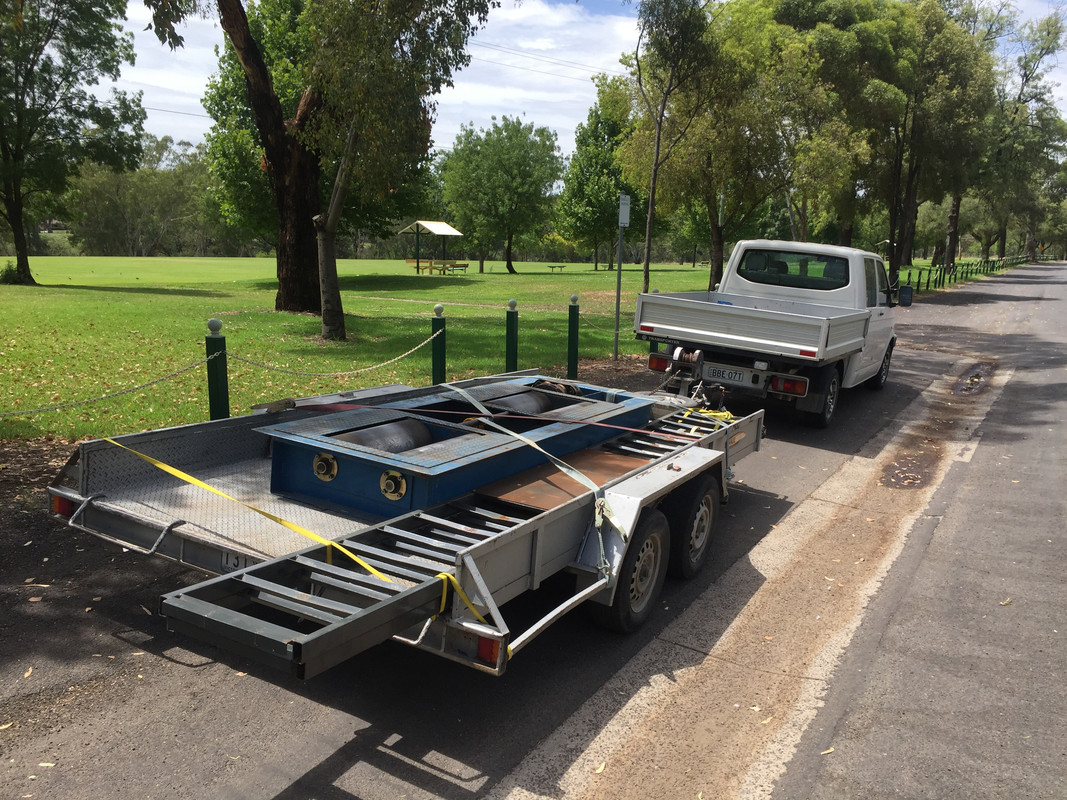
I got it to my home workshop and off the trailer. Very heavy!
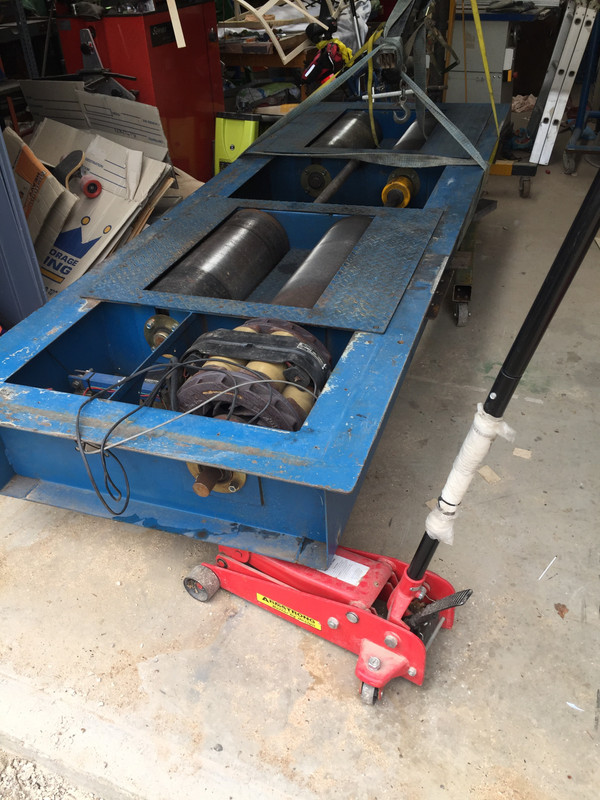
I bought a fan that had been used in a bakery to cool baked bread. I rebuilt and painted it.

I put my car on the dyno. The car is a tiny Honda Insight that I have turbo'd and run on programmable MoTeC management. I did all the mapping from scratch on the road.
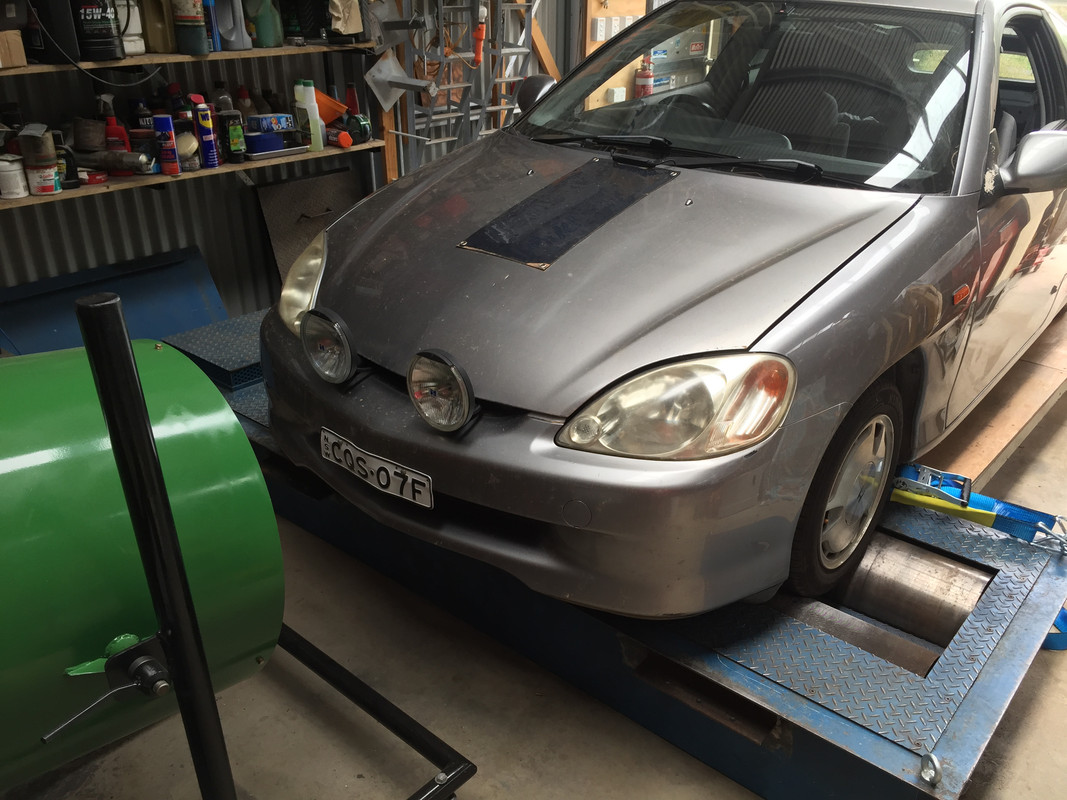
I modified some ramps that I had made to make them suitable for the dyno.
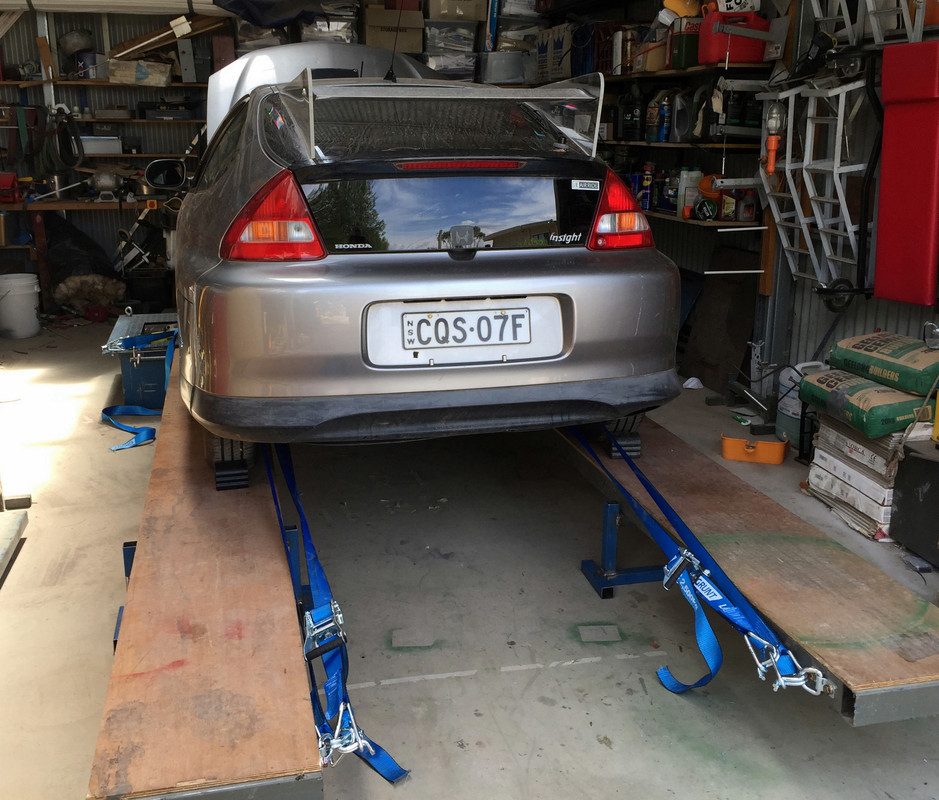
I built a test/temporary power supply from four 12V batteries and an eBay 60V motor speed control. It provided enough load to allow me to work on cruise mapping eg EGR.
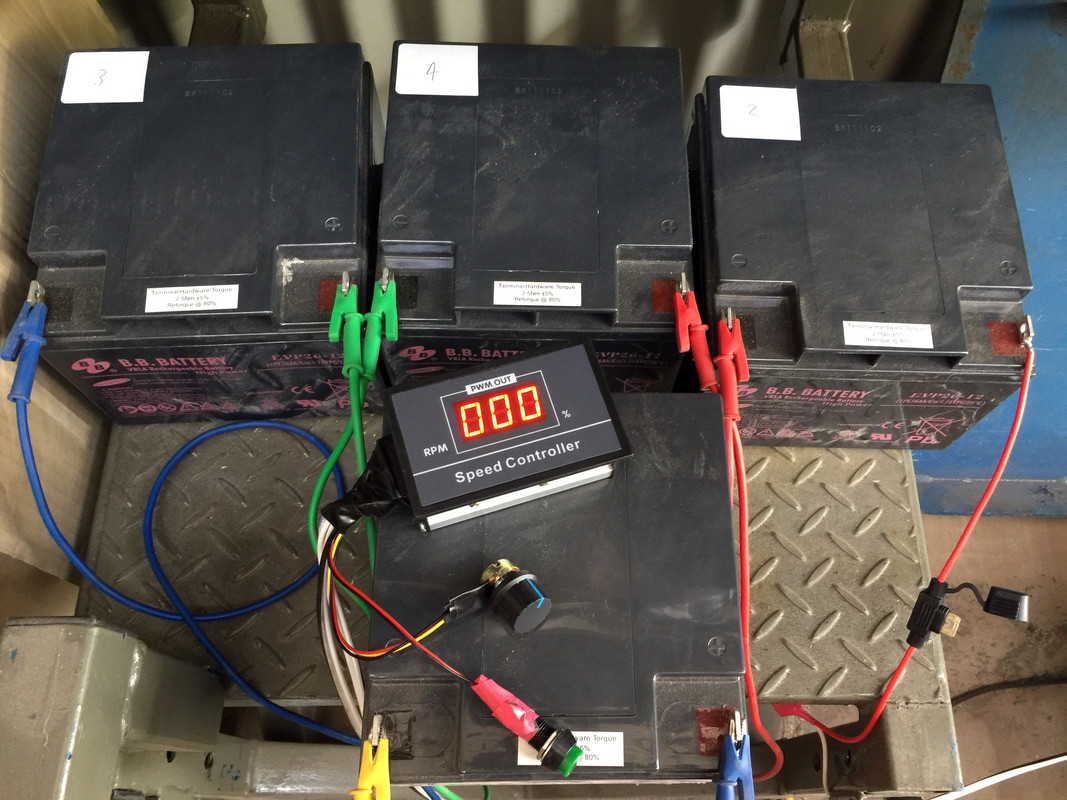
I then bought the components for a proper power supply - mains filter, United Automation AFM-11 trigger module, IXYS VHF28-16I05 SCR module. Power suply for the AFM-11 is 18V AC.
I put the parts together on a piece of board to see if they work. Did some testing tonight and all seems OK. Dyno resistance is about 24 ohms, so about 8A at 200V DC. Power supply should be capable of a lot more current at lower resistances.

Hi julian . I posed a reply before and your thread disappear, i see you fixed it.
Posting pictures can be tricky yet some members post many pitures in on post rather than one picture per post.
I read you purchase the yourdyno blue box somewhere be a interesting build and l subscribe to this thread.
Q1 - Have you worked out the manufacturer of the chassis dyno?
Q2 - what electric brake is inbetween the confines of the chassis rails ?
Looks good.
Just a tip for tieing down FWD.
Using the tow hooks in the front cross member if it has them is better then the rear cross member since it pulls the car into the front roller more which is what the brake is working on.
Looks good.
Just a tip for tieing down FWD.
Using the tow hooks in the front cross member if it has them is better then the rear cross member since it pulls the car into the front roller more which is what the brake is working on.
Car has full undertray so those positions aren't easily accessible. I loosened all the straps tonight and it climbed onto the front roller by about 20mm, but was still stable left/right when I deliberately steered.
Hi julian . I posed a reply before and your thread disappear, i see you fixed it.
Posting pictures can be tricky yet some members post many pitures in on post rather than one picture per post.
I read you purchase the yourdyno blue box somewhere be a interesting build and l subscribe to this thread.
Q1 - Have you worked out the manufacturer of the chassis dyno?
Q2 - what electric brake is inbetween the confines of the chassis rails ?
No, I cannot find who made the dyno. There is not maker's badge or markings, but it looks quite professional, not a home built job. It uses metric fastenings!
The retarder is Telma CC80 - details here.
Tying down FWD vehicles in a criss cross pattern ( right corner of the car to left corner of the chassis dyno & left corner of the car to the right corner of the chassis dyno ) at the front of the vehicle works best.
Accessibility maybe a issue like you mention might hinder the tying down method. Sinces it your vehicle you will be doing R&D maybe fabricate easy accessible mounting points below the covers.
Agressive big horsepower FWD cars
with acute casters/cambers,
bad wheel alignments and warn front
ends can be fun on a chassis dyno.
Also rubber wheel chocks place on the rear wheels. Leave room between the wheel chocks and wheels the thickness of your hand. You may have experiment with the clearance. Front wheels have to drive onto the rollers.
I see your ramps are up, level drive on ramps are a must. So some form of front hinging the ramps and some form of jacking up the ramps so they are level with the above ground chassis dyno is a must in my books.
Hate to see what the oil is doing inside a engine when the car is on a dyno when on a angle?
Great, Julian!
Let us know how the AFM-11 works out. I have looked at that module and it looks good on paper and is only about $100 or so. Make sure to put the soft start to 0.
Great, Julian!
Let us know how the AFM-11 works out. I have looked at that module and it looks good on paper and is only about $100 or so. Make sure to put the soft start to 0.
Yes total power supply cost is only about AUD$250 - ie US$177 plus box and little transformer.
I'll try to do some more testing today - but it is going to be something like 42 degrees C here today - maybe 50+ in shed!
Did some more testing using a multi-turn pot to give finer control. It also seems to be working.
If you change the pot fast, the reaction time of the system can seem to lag a bit (soft start is set to zero). But I am not sure how fast other systems react (taking into account roller and driveline inertia, etc).
Next step is to connect up the Your Dyno box, but I am expecting problems with the speed sensor using the existing sensor/wheel, so it may not be a quick process.
